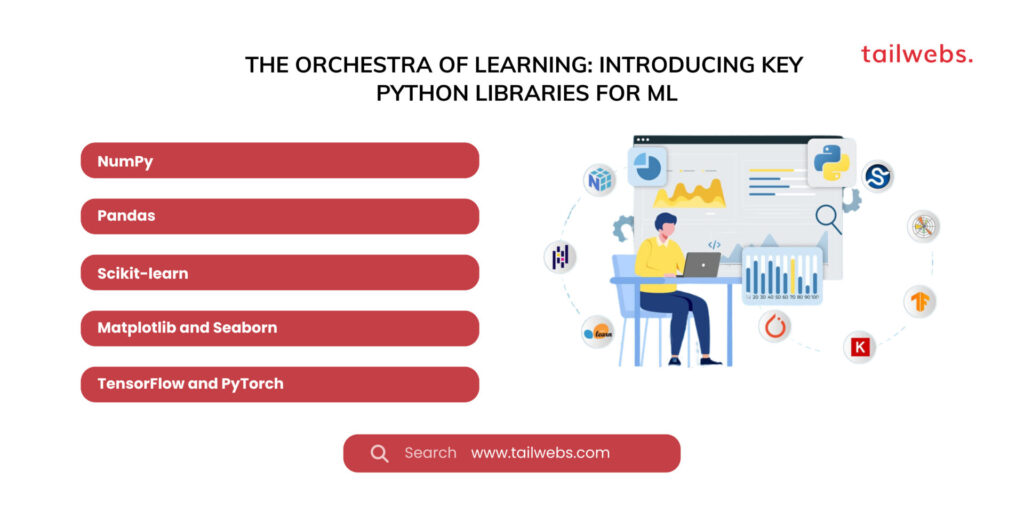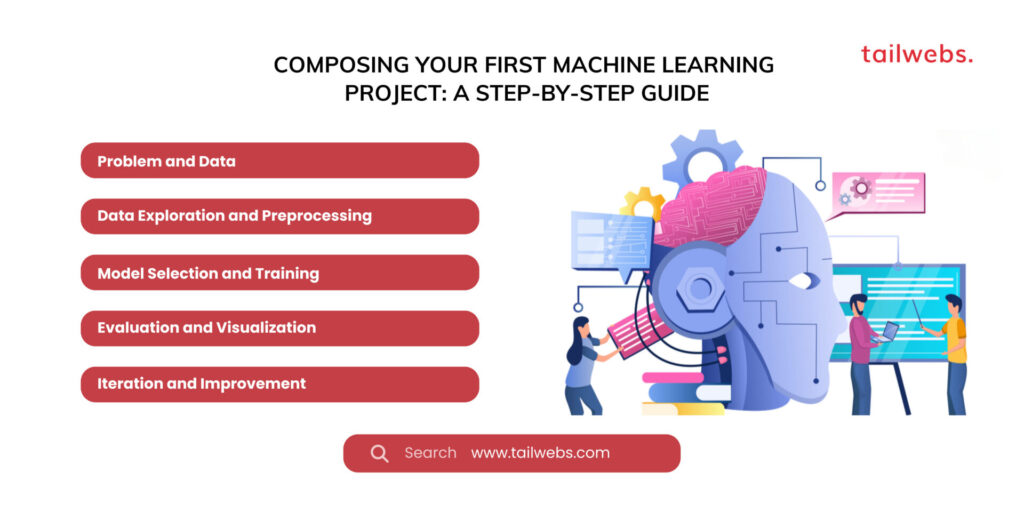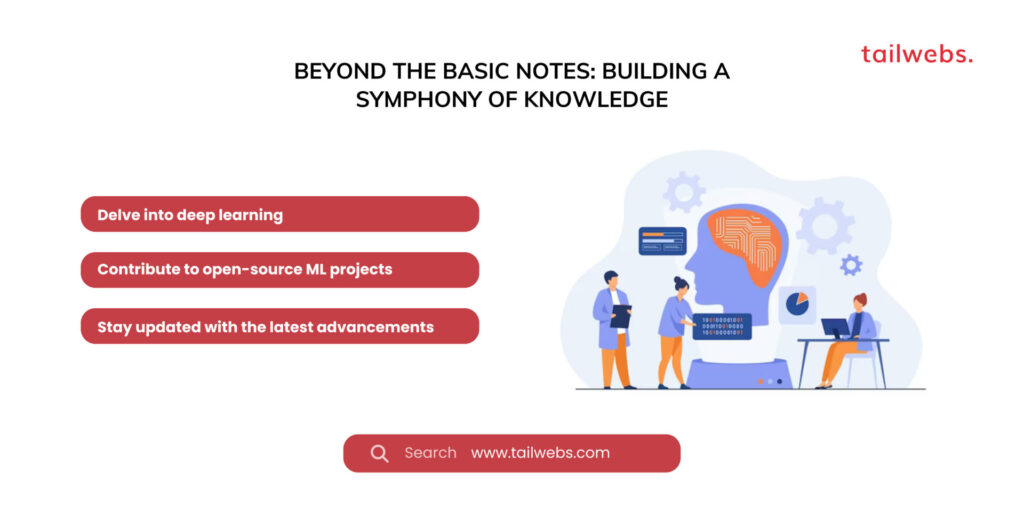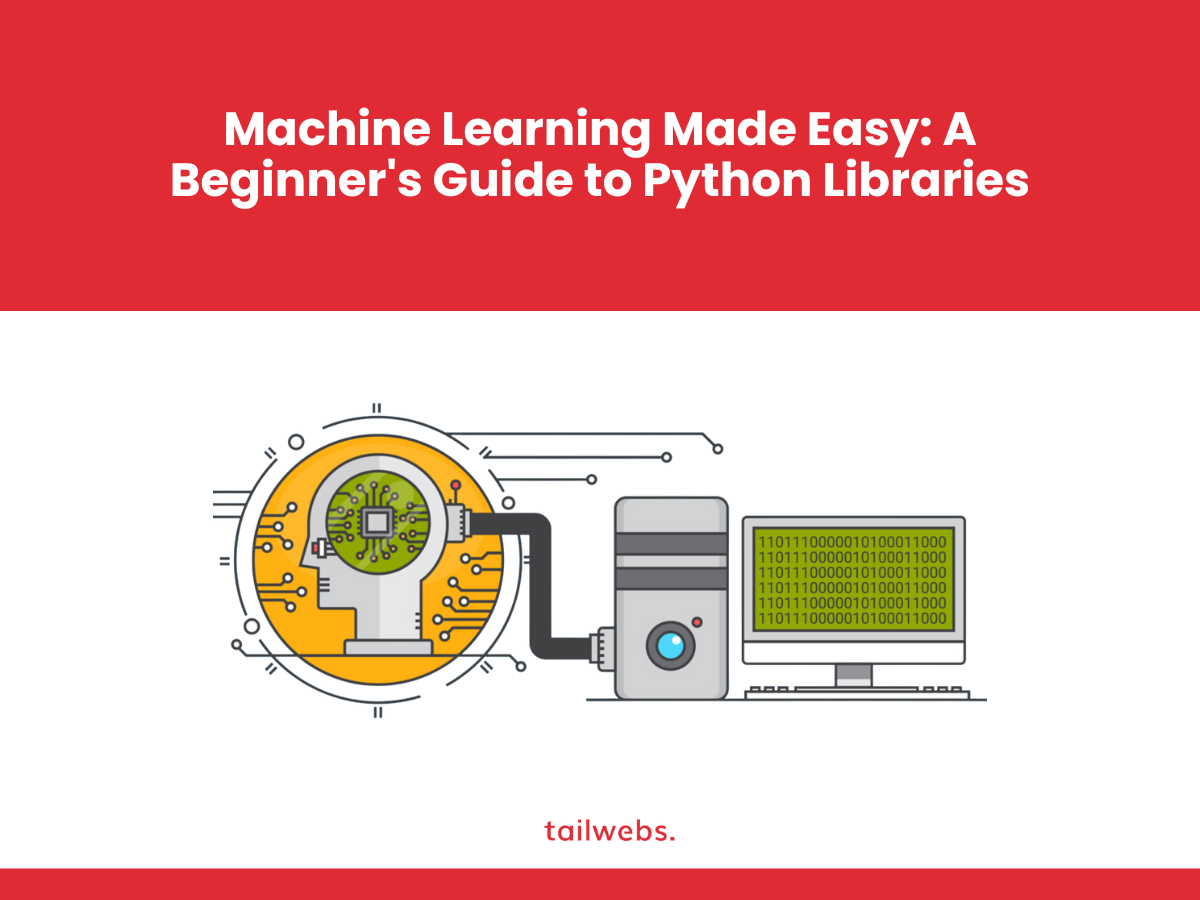The world of machine learning (ML) might seem intimidating, shrouded in complex algorithms and advanced mathematics. But fear not, aspiring data scientist! With the right tools and guidance, the path to understanding and applying ML becomes more accessible. Enter the realm of Python libraries, your gateway to exploring and implementing ML concepts with ease. Let’s demystify these powerful tools and unlock the potential of ML within you!
The Orchestra of Learning: Introducing Key Python Libraries for ML
Imagine the ML landscape as a vast orchestra, where diverse components like data, algorithms, and libraries work in harmony to produce insightful results. Python libraries act as individual instruments, each offering unique functionalities to compose the beautiful melody of ML projects. Here are some essential libraries to get you started:
NumPy:
The foundation of numerical computing, NumPy provides efficient data structures and array operations crucial for ML tasks.
Pandas:
A powerhouse for data manipulation and analysis, Pandas allows you to wrangle messy data into structured formats for ML algorithms.
Scikit-learn:
The go-to library for implementing various ML algorithms, offering classification, regression, clustering, and more in a user-friendly way.
Matplotlib and Seaborn:
These visualization libraries create informative and aesthetically pleasing plots to understand your data and model performance.
TensorFlow and PyTorch:
Deep learning frameworks enabling you to build and train complex neural networks for advanced ML tasks.

Stats Highlighting the Power of Python Libraries:
- Python ranks as the 2nd most popular programming language globally, boasting a vast community and extensive resources for ML libraries. (Stack Overflow Developer Survey, 2023)
- Scikit-learn enjoys over 6.5 million downloads monthly, demonstrating its widespread adoption and ease of use. (PyPI, 2023)
- Learning Python and its ML libraries can significantly enhance career prospects, with ML skills being highly sought-after in today’s data-driven world. (Burning Glass Technologies, 2023)
Composing Your First Machine Learning Project: A Step-by-Step Guide
Ready to put theory into practice? Let’s build a simple ML project using our newfound knowledge:
1. Problem and Data:
Define a clear problem you want to solve with ML, like predicting movie ratings or classifying handwritten digits. Collect or load a relevant dataset.
2. Data Exploration and Preprocessing:
Use Pandas to explore your data, identify missing values, and perform necessary cleaning and transformations.
3. Model Selection and Training:
Choose an appropriate ML algorithm from Scikit-learn based on your problem type (e.g., regression for prediction, classification for categorization). Train the model on your prepared data.
4. Evaluation and Visualization:
Assess your model’s performance using metrics like accuracy or precision. Use Matplotlib or Seaborn to visualize results and gain insights.
5. Iteration and Improvement:
Based on your evaluation, refine your data preprocessing, try different algorithms, or adjust hyperparameters to improve model performance.

Recommended Resources and Tools:
- Scikit-learn Tutorial: https://scikit-learn.org/stable/tutorial/
- Machine Learning Crash Course: https://developers.google.com/machine-learning/crash-course
- Kaggle Competitions: https://www.kaggle.com/
- OpenAI Gym: https://gym.openai.com/
- Coursera Machine Learning Specialization: https://www.coursera.org/specializations/machine-learning
Beyond the Basic Notes: Building a Symphony of Knowledge
Remember, this is just the beginning of your ML journey. Keep exploring and learning:
Delve into deep learning:
Utilize TensorFlow or PyTorch to tackle complex problems requiring neural networks.
Contribute to open-source ML projects:
Give back to the community and gain valuable experience.
Stay updated with the latest advancements:
The field of ML evolves rapidly, so continuous learning is key.

Conclusion: Conduct Your Own Machine Learning Symphony
Remember, mastering machine learning isn’t a solo performance; it’s a collaborative melody composed of countless instruments. As you navigate your journey, consider the broader impact:
Advocate for responsible AI development and deployment:
Ensure algorithms are fair, unbiased, and align with societal values.
Promote data privacy and security:
Protect individual rights and prevent misuse of personal information.
Bridge the digital divide and democratize access to ML:
Empower everyone to leverage the power of machine learning.
Use ML to address global challenges:
Tackle climate change, healthcare disparities, and other pressing issues with innovative solutions.
Ultimately, the future of machine learning belongs to those who embrace continuous learning, collaboration, and ethical practices. By adopting this mindset, you can transform from a single musician in the ML orchestra to a skilled conductor, composing a harmonious melody of innovation and progress that shapes a better future for all.





